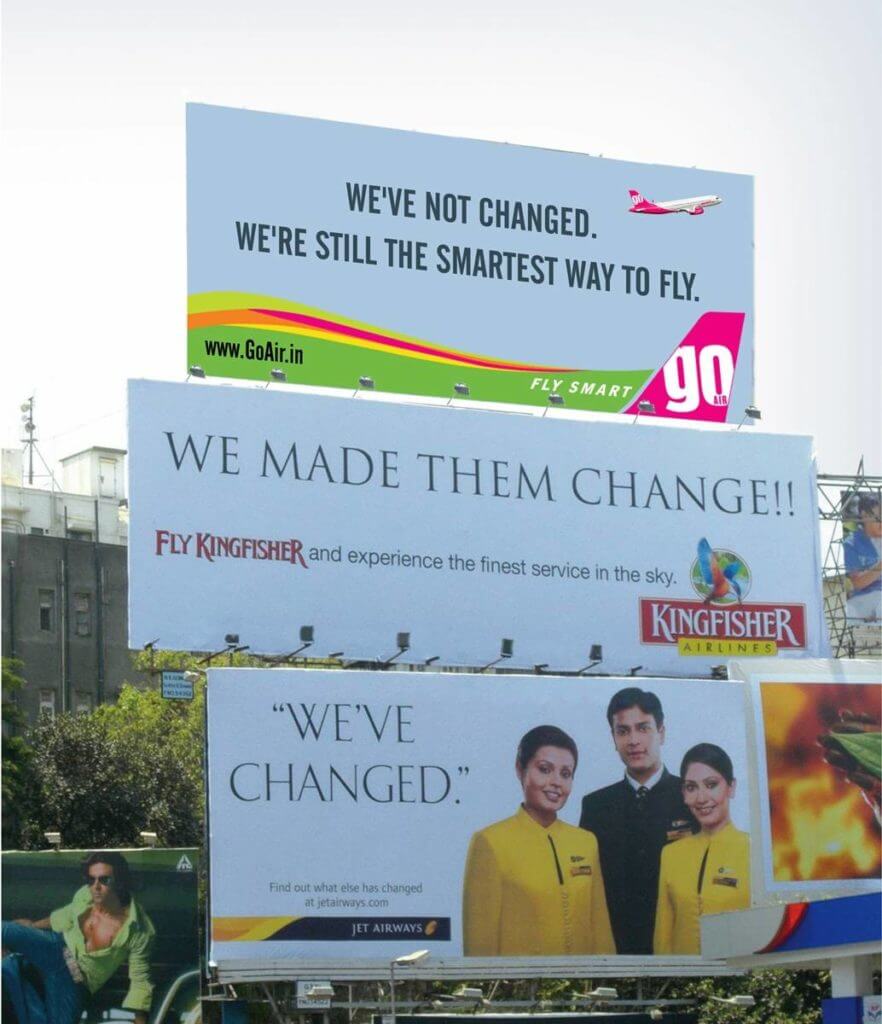Let's Talk
We would love to hear from you. Want to know more about our services or have any questions? Say Hi!
Ambush Marketing – Does it Pay?

Wacky and wicked, ambush marketing works only when the consumers are in the mood to be humoured
Do you remember the Nike sponsorship of the 1996 Olympics?
Truth be told, they almost didn’t and arch rival Reebok stepped in.
But we bet you might still remember Michael Johnson’s shiny gold number on the track, making more news than his final run record, and therein hangs the tale of ambush marketing.
Oxford dictionary interprets the word ‘ambush’ as ‘an attack from a hidden post’ so there always has to be something stealthy about it. Ambush is also supposed to have been derived from French root verb ‘embuschier’ which when roughly translated into English implies, ‘….to place in a wood.’
Got you in the woods?
How does ambush marketing fit in with that, you might ask?
Hang on….I was about to come to that.
But first let’s plunge deeper into the history and geography of ambush marketing.
The beginnings
Probably the most aggressive, in-your-face, unapologetic, and successful attempts at ambush marketing were made by – you guessed, right – Nike! During the lifecycle of this brand, Nike has just about ambushed every other sports shoe brand, you can imagine why – margins are thin and it’s a cut-throat business world out there.
As a game of oneupmanship ambush advertisements are fund and exciting. And as exciting stuff goes, it has its high points, as well as low!
But used correctly, and barely, it can of course cut the most lasting impression in the consumer’s mind, if you don’t find the unethical side a little troubling. Since ambush marketing does not involve the use of fair practices – just the reverse, rather – it can only be dubbed as wacky and wicked marketing. Obviously, it can’t work for vulnerable brands that are ill-prepared for vicious counter attacks. Timing, therefore is of critical essence in ambush campaigning.
Consumers are wise enough to see through ambush attempts, but if it’s radical, you can bet they would be quick to lap it up. As a marketing ploy, ambush has its irrelevance and magnetism – think Pepsi-Coke, or closer home, think HUL and P&G. These brands have often indulged in strategic leg-pulling of each other’s rival brands (e.g. Dove vs. Pantene). But you need to carefully draw the line, or it can also drag you into messy legislation.
Last year, The Hindu that holds complete sway over the southern market took a cheeky dig at The Times of India with a slick, ‘Stay Ahead of The Times’ campaign. The Old Lady of Boribunder’s had asked with it with “Wake Up Chennai” a sinister reference to The Hindu’s conservative style of reportage. That brought out the Mickey in The Hindu and it started relentlessly drubbing ToI in the campaign series that followed “Sense not sensation,” “Because government malfunctions matter more than wardrobe malfunctions,” “Also has page 1,2, 4, 5, 6, 7…” “Read about political parties not page 3 parties…” that sought to completely demolish the credibility of ToI, if it had any in the first place!
A term borrowed from modern-day warfare techniques, ambush campaigns come in many strategic forms, though they usually focus on a single agenda – rip apart the rival and discredit it completely in the eyes of the consumer with means both fair and foul.
Employed usually at the times of big sporting events, wherein brands attempt to cash in on the fan frenzy without having to spend big on sponsorships, Indian brands have also begun to follow suit, although the trend here is more reflective in the FMCG sector.
Clearly, the gains from ambush marketing are twofold:
- To maximum RoI from the marketing spend and
- To undermine the rival brand’s marketing by stealing its thunder and causing confusion in the consumer’s mind
Remember how Jet Airways came up with hoarding declaring “We’ve changed”! only to be greeted by Kingfisher’s “We’ve made them change”- to be, in turn ambushed by Go Airways with the claim, “We’ve not changed. We are still the smartest way to fly”!
It had everyone in splits.
Another instance – the latest wrangle between Hindustan Unilever’s Dove and Procter & Gamble’s Pantene. P&G’s tagline read, “A mystery shampoo. Eighty percent women say it is better than anything else,” instigated P&G to come back a few days later and puncture Dove’s balloon with “There is no mystery. Dove is the No. 1 shampoo.”
Done tastefully, as in the example above, ambush marketing can be fun. But since you are trending a very thin, red line here, a little bit of harmless fund doesn’t turn into a hit under the belt!



